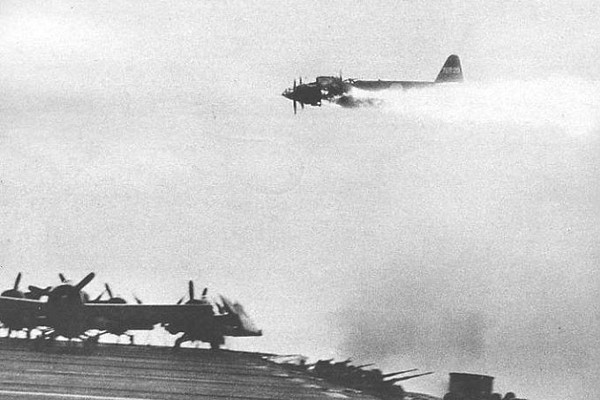Scientists have conclusively confirmed that the wreckage discovered on the seafloor off the coast of the Philippines corresponds to the remains of the USS Ommaney Bay, a crucial aircraft carrier that met its tragic fate during World War II, less than a year after setting sail from San Diego Bay on its second deployment.

USN, Public domain, via Wikimedia Commons
The ill-fated Casablanca-class carrier fell victim to a devastating attack on Jan. 4, 1945, in the Sulu Sea, when a Japanese kamikaze plane struck its deck. The impact ignited ferocious fires and triggered multiple munitions explosions, resulting in the loss of nearly 95 courageous crew members. The extent of the damage was so severe that the Navy made the difficult decision to scuttle the ship.
Reports of possible remnants belonging to the Ommaney Bay were relayed to the Naval History and Heritage Command (NHHC) in Washington, D.C., back in 2019 by Vulcan, a renowned underwater research and conservation company.
Earlier on Jul. 10, the NHHC’s underwater archaeology branch released an official statement affirming that the wreckage has indeed been positively identified as that of the USS Ommaney Bay. The vessel, measuring 512 feet in length and powered by steam engines, was considerably smaller than the nuclear-powered aircraft carriers of today.
Rear Admiral (Ret.) Samuel J. Cox, the Director of NHHC, expressed profound reverence for the sailors who made the ultimate sacrifice in defense of their country. In a statement, he emphasized, “Ommaney Bay is the final resting place of American Sailors who made the ultimate sacrifice in defense of their country. This discovery allows the families of those lost some amount of closure and gives us all another chance to remember and honor their service to our nation.”
The Ommaney Bay, categorized as an escort carrier, was constructed by Kaiser Shipbuilding in Vancouver, Washington, and entered service in the spring of 1944. Initially tasked with transporting troops and aircraft from Oakland to Brisbane, Australia, the ship later underwent training drills and repairs in San Diego. On June 10, it embarked on its journey to the western Pacific, where it provided vital air cover and executed strategic strikes during the Palau Islands invasion. Additionally, the Ommaney Bay played a pivotal role in the Battle of Leyte Gulf, a crucial engagement that severely incapacitated the Japanese fleet, thereby contributing to the ultimate victory of the United States in the war.
Tragically, the service of the Ommaney Bay came to an abrupt and devastating end in January of the following year when it suffered a direct hit from the kamikaze plane near Mindanao, according to historical accounts.
The confirmation of the USS Ommaney Bay’s identity marks a significant milestone. The findings not only bring a measure of closure to the families of those who perished but also provide an opportunity for all of us to collectively remember and pay homage to the extraordinary service and sacrifice rendered by these brave sailors.
For more information, hit the Source below